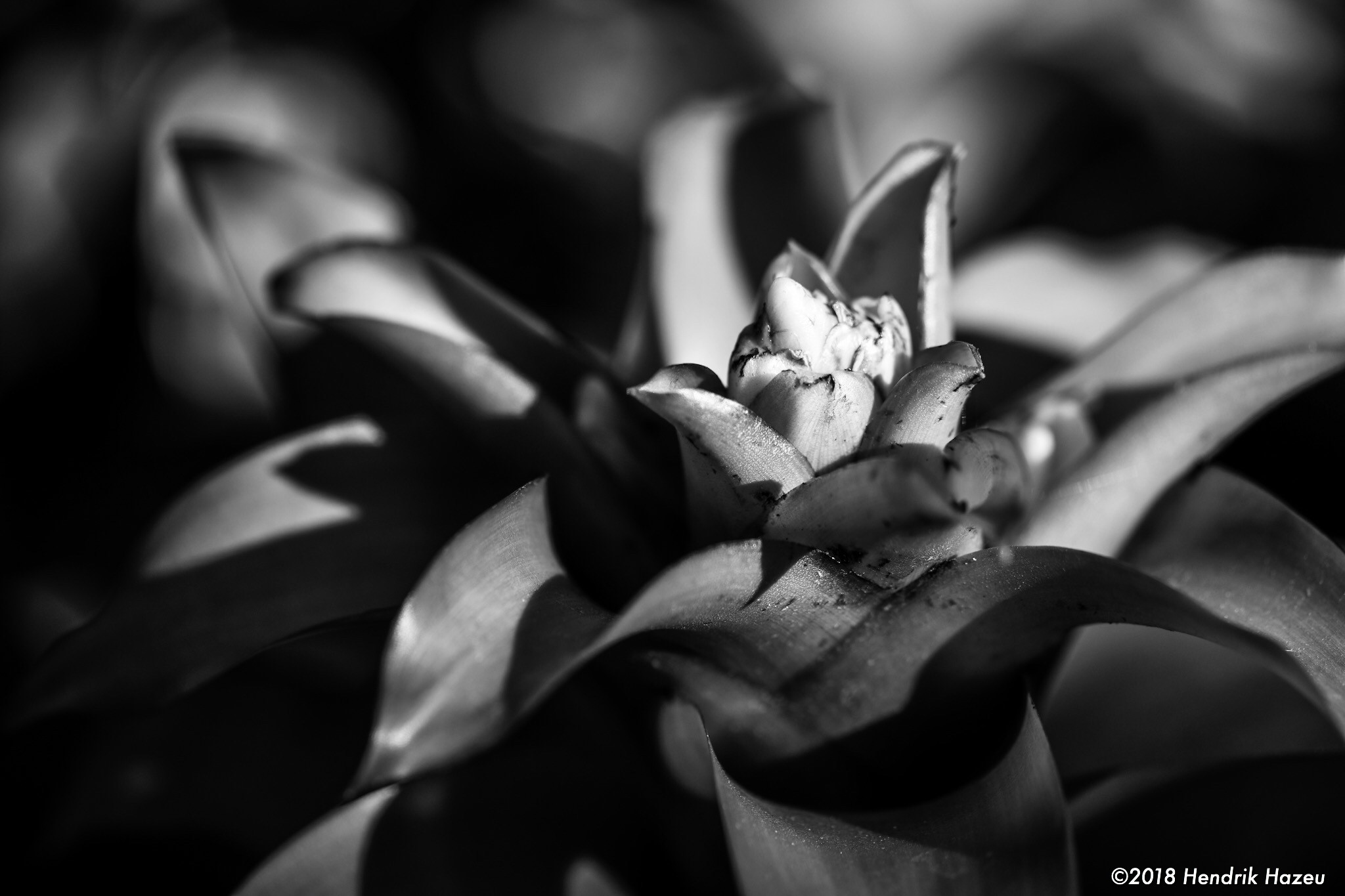Every Photographer’s had it. The Block. Writers call it “Writer’s Block”, that dreaded moment where your creativity hits a brick wall. You want, but nothing works no more. The creative flow stops & your pic’s just suck. Big. Time. So, y’all up against a dead-end? OK, so go for a walk, they say. Eliminate distractions, they suggest. You gotta get yo’self outta that rut, they tell you. Nice. But not very helpful, such generic advice. If you’re experiencing writer’s (or better photographer’s) block, or if you’re dreading getting it, I got an idea for youse right here. It works (at least for me ;-) … helps you break thru your creative constipation & lights a fire under your photography: Go Micro! Please read on to find out what that means!
“Micro” in action: Nikon’s Micro Nikkor AF-S 105mm f/2.8G VR @f/5.6, 1/250sec, ISO 180
“Micro” is Nikon speak for “Macro”, the photography of small things below the usual minimum focusing distance of lenses around 1/focal length in cm, with reproduction ratios above 1:10 up to and including 1:1 (go further and you’re in real “micro”, larger-than-life territory). If you don’t know what to photograph anymore, or you’re stuck inside with a Siberian blizzard howling outside, taking images of things close by is a great way to get your creative juices flowing again!
Closer view, framed by Micro Nikkor AF-S 105mm f/2.8G VR @f/5.6, 1/500sec, ISO 64
I often ponder if this or that image is worth sharing on my blog - will my readers appreciate them or are they just mediocre snapshots which don’t elicit any meaningful emotion and therefore just waste my visitors’ valuable time? With Macro photography the results can often be quite interesting right off the bat, coz you showing stuff people normally aren’t aware of. And your subjects are usually quite static, patiently “enduring” while you try out all kinda framing, composition, lighting, exposure, or angles. You actually got time to “work” your subject, see example image below, balancing sharpness and blur between fore- and background, the unsharp flowers mirroring the sharp ones:
More of the same, seen with Micro Nikkor AF-S 105mm f/2.8G VR @f/5.6, 1/500sec, ISO 64
Don’t get me wrong, I ain’t advocating that taking Macro images is a cure for crummy photography, but it’s a great training & learning field which will also benefit your normal photography. I like the above image because it has a rich tonal range from dark blacks to pure whites, overall creating an impression of lightness thru the bright tones of the flowers’ petals
Macro flower composition, Micro Nikkor AF-S 105mm f/2.8G VR @f/5.6, 1/250sec, ISO 64
Macro means that your depth of field is extremely limited. Even with f/5.6 as in above image you get a completely blurred background which accentuates and compliments the sharp part of the image. Also in the below image I love how this narrow depth of field and the contrast between the blurred, darker outer areas and the sharp, bright center of the image gives it a 3 dimensional quality & pop:
More Bokeh, using Micro Nikkor AF-S 105mm f/2.8G VR @f/5.6, 1/250sec, ISO 110
Actually I started experimenting with macro photography more by coincidence than intent: I was planning to get hold of a prime portrait lens. 85mm was a too close angle of view to my beloved 58mm, so I was flirting on the web with Nikon’s amazing AF-S 105mm f/1.4E. On closer scrutiny I found out that that one had some disadvantages: An eye-watering RRP of over 2k$ (which currently is just quite a wayz over my budget) and a minimum focusing distance of only 1m … Just a tick too long IMO (would’ve preferred 0.85 or 0.9m to get really close frame filling head portraits). Also not having VR meant it limited free-hand shutter speeds to 1/250sec
Spiked petals, captured by Micro Nikkor AF-S 105mm f/2.8G VR @f/5.6, 1/350sec, ISO 64
So, I started to look for alternatives and found Nikon’s Nicro-Nikkor AF-S 105mm f/2.8G VR, with which all the images on this post are shot. This lens turned out to be a very versatile offer at an attractive price of nearly a third of the f/1.4E, with macro up to 1:1 (life-size, w/o needing extension tubes) & VR included, at a max. aperture of f/2.8! WTF f/2.8? What about bokeh? Would it be good enough for portraits? Well, please judge for y’self in below image of my pretty wife:
Bokeh portrait, with Micro Nikkor AF-S 105mm f/2.8G VR @f/4, 1/250sec, ISO 1000
Concluding I can recommend Nikon’s Nikkor AF-S 105mm f/2.8G VR. It is a macro lens, with very good sharpness & minimal curvature of field. It’s not a specialized portrait lens with an extreme thin depth of field. So, if youse looking for a lens delivering organic, dreamy portraits at wide open apertures of f/1.4 to f2 (like wedding photographers love), it’s precise, somewhat clinical character maybe ain’t for you. However, if you looking for a fun, versatile, high quality lens for documentary, journalistic portraits all the way up to life-size macros at a very attractive price, with vibration reduction to boot, you’ll be impressed! What do you think? If you got any questions, or would like to leave me comments please do so in the comments section below or on my about page. Thanks for your interest and for looking by, I appreciate it!
Many thanks & wish y’all a relaxing, successful photo weekend, best regards
Hendrik
I hope this post was helpful / interesting for you - If you like you can support me by sending me a small donation via PayPal.me/hendriximages ! Helps me run this site & keeps the information coming, many thanks in advance!

